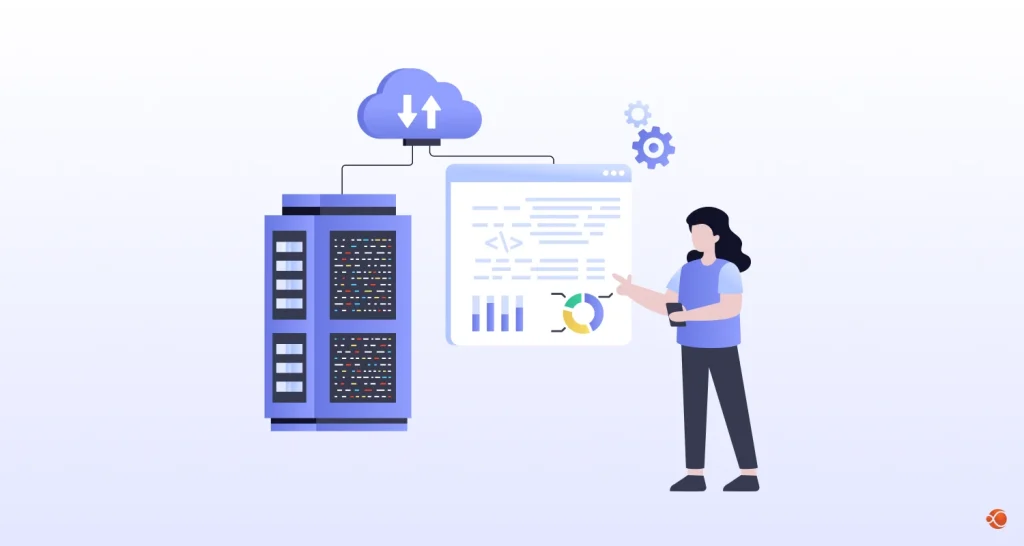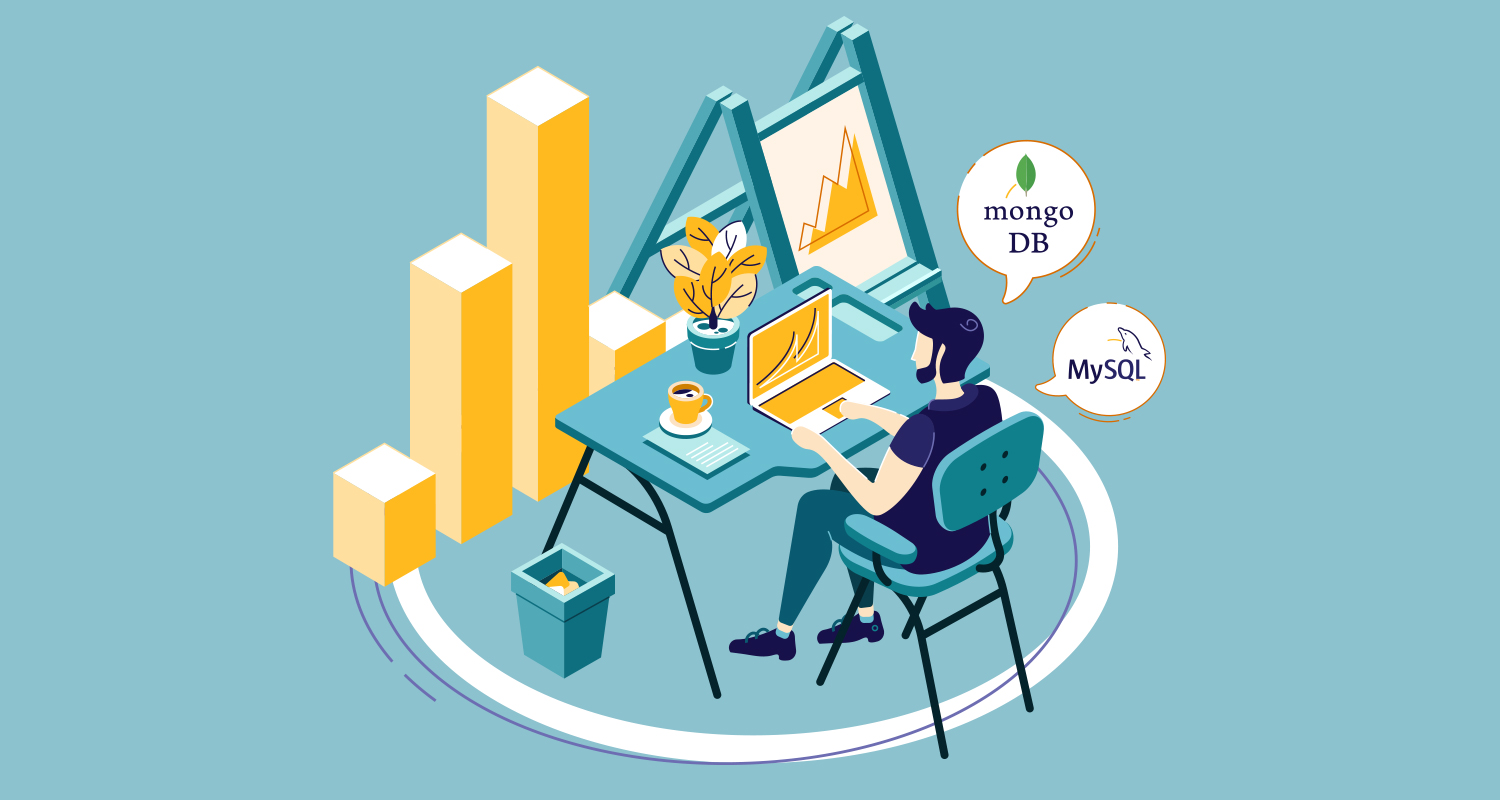Do you feel exhausted when deciding which framework to use for your next project? Choosing a web framework is crucial to the success of your project. This is where the rivalry between two giant frameworks begins: Laravel vs Ruby on Rails.
Laravel and Ruby on Rails are both popular backend frameworks for developers. The most commonly used Ruby on Rails framework is Ruby on Rails, despite Laravel development services being a strong competitor. You might be wondering – Are Ruby and Laravel better? In most of the cases, the answer is yes. Even so, it may not be suitable for your company.
The most common mistake clients make is to go with the most popular option instead of rationalizing their requirements and finding the right match based on those requirements. We compare these two popular frameworks to help you choose the right web backend framework.
About Laravel
A web application can be built using Laravel by following the MVC pattern built in PHP. Developers use this framework to build web applications quickly.
The Laravel Framework for Web Development is a PHP-based open-source framework. As a result, it has gained popularity among developers, as many of them have experience working with it.
If you are struggling with Laravel development? You can outsource Laravel development and stay to your advantage.
About Ruby on Rails
As you know, Ruby on Rails is an open-source Ruby-based web framework that allows the creation of complex web applications. Some developers would prefer the Ruby on Rails framework because it features a metaprogramming feature that many developers find useful.
The Ruby on Rails framework is supported by XML and JSON, which developers use to exchange data. Undoubtedly, developers prefer to use the Ruby on Rails framework for web application development, owing to its ability to significantly reduce development time, allowing the developer to focus on developing the application’s latest features.
Laravel: Why Should You Use It?
Most web applications involve significant activities such as storing mechanisms, session management, directing, verifying, etc. The purpose of Laravel is to simplify the development cycle by making all of these tasks easier. Engineers can create their framework by utilizing its structural style.
Since Laravel web development companies employ MVC designs efficiently, you may use regulators or statements to implement the application’s business logic. Developers are given the ability to adapt to certain honors, which allows them to develop small business applications containing complex business logic.
Logic is maintained by utilizing IoC, i.e inversion of control, which provides a mechanism for monitoring class conditions.
Ruby on Rails: Why Should You Use It?
Web standards such as JSON and XML are used to support information flow during the development of a Ruby on Rails application.
During the web development process, a few ideal models should be utilized for Rails-based web applications; these are similar to the DRY rule in which an engineer should not rehash the logic of the previous system.
Rails effectively promotes and upholds these standards. For example, MVC is based on model-view-regulator, a benchmark for developing site pages and web administration systems.
Metaprogramming is a key component of Ruby on Rails software development. Metaprogramming, among other features of Rails, reduces the developer’s workload, thus allowing him to concentrate on business logic rather than development.
A metaprogramming approach differs from other frameworks, where companies hire Ruby on Rails developers who can code without prior preparation.
A developer’s life can be simplified using the traditional methodology rather than setting up a configuration.
Crucial Difference Between Ruby on Rails and Laravel
There is a clear comparison between Ruby on Rails and PHP Laravel here, which you can use to select the framework that best suits your needs. You will find detailed information here about both backend frameworks to compare Laravel vs Ruby on Rails and decide which one is better for you to build web applications.
| Basis | Laravel | Ruby on Rails |
| Language | PHP | Ruby |
| Release Date | June, 2011 | 13th December, 2005 |
| Syntax | Using semicolons and curly braces correctly | There is no need to use semicolon and curly braces |
| Features | 1. Streamlined ORM 2. Custom CLI 3. Multi-factor authentication | 1. Clear Ruby syntax 2. Plugins from third parties 3. Solid MVC support |
| Community | Laracasts | Railcasts |
Now that we have a glimpse of the differences between these frameworks, let’s clearly understand the detailed differences between Laravel and Ruby on Rails:
Laravel vs. Ruby on Rails: Handling of URLs and Routing
Providing developers with powerful routing systems, Ruby on Rails and Laravel also provide developers with simple, readable syntax for defining URL routes. A powerful routing system is included in Ruby on Rails, allowing developers to define routes based on RESTful principles.
In contrast, Laravel provides an easy-to-use routing system for defining routes. Also, Laravel offers a variety of other features which can make working with URLs and routes much easier, such as middleware and route model binding, which can allow you to add your logic to routes and URLs.
Laravel vs. Ruby on Rails: Views and Templates
There are powerful templating engines included in Ruby on Rails and Laravel for creating clean, readable templates. Embedded Ruby in Ruby on Rails facilitates embedding Ruby code within HTML templates.
On the other hand, Laravel provides developers with a powerful templating engine called Blade, which allows them to create clean and readable templates using a simple syntax.
Several features are also included in Blade, such as template inheritance and control structures, which make it easier to construct complex user interfaces.
Laravel vs. Ruby on Rails: Syntax and Language
Laravel and Ruby on Rails differ most noticeably in their programming languages. At its core, Ruby on Rails can be best described as a framework built around the Ruby programming language, known for its well-written code and elegant syntax. Meanwhile, Laravel is built upon PHP, a less expressive and verbose language.
Ruby on Rails is more concise and easier-to-read and write the language, even though both languages have strengths and weaknesses. Laravel has significantly improved the PHP language and has introduced several modern design concepts that simplify working with PHP.
Laravel vs. Ruby on Rails: Conventions and Design Patterns
Model-View-Controller (MVC) is a common architecture pattern, but both frameworks apply different patterns and conventions based on design. Convention over configuration is the hallmark of Ruby on Rails, which provides developers with a standard set of conventions and coding patterns.
Developers can decouple their code with Laravel by using dependency injection and service providers, allowing them to make it modular and reusable. Laravel also uses several other design patterns, like the Repository design pattern and the Facade design pattern, allowing complex applications to be developed faster.
You can hire dedicated Laravel developer to develop a top notch app that ranks well.
Laravel vs. Ruby on Rails: Performance
Performance is one of the hallmarks of Ruby on Rails for Ruby on Rails and Laravel web applications. The speed of developing web pages can be increased significantly by leveraging the right tools and utilizing the skills of experienced developers. A crucial attribute of Laravel is that it is not affected by the production environment, which makes it different from Ruby on Rails regarding speed.
In contrast, Rails is an incredibly straightforward framework, free of any difficulties. Nevertheless, if this is properly optimized, it could lead to better performance of web applications.
Some tasks can be handled more effectively with other tools.
Due to the increased workload on Ruby Garage Collector due to poorly handled memory optimization, Rails applications may perform slower. In this regard, when memory optimization techniques are applied, rails will perform better.

When to use Laravel Framework
Developing Enterprise-Grade Applications Is Your Goal.
With Laravel, you can build enterprise-grade and complex web applications that handle many requests per second. Several features of this framework make it an ideal enterprise application framework, such as the implementation of Active Record and support for unit testing.
High-Security Applications
As a result of its crypt hashing calculation, arranged SQL, and hashed secret words, Laravel provides a more secure app solution than Rails.
When to use the Ruby on Rails Framework
You Want to Create an E-commerce Application
E-commerce apps like Shopify and Spree Commerce generally use Ruby on Rails as their backend framework, which speaks volumes about their capabilities. Using Ruby on Rails, you can easily create an e-commerce store. The ROR gems help you integrate e-commerce functions and serve specific requirements.
Developing Custom Web Applications
Custom web apps should be developed with Ruby on Rails unless your site expects high traffic.
Ruby on Rails is good for building niche web apps with proper functionality and a reasonable budget.
Conclusion
Developers often have difficulty choosing a framework. An appropriate trending framework should be used for a particular project, and individuals should also be able to develop skills and apply their knowledge in real projects.
To accomplish both objectives, being familiar with all web frameworks available is necessary.
The decision of whether you should use Ruby on rails vs PHP Laravel framework can be made based on many factors.
If you want a solution proven to work in many successful projects, Laravel is the best solution. If you want to try out a promising technology, consider Ruby on Rails.
Frequently Asked Questions
Which is better, Ruby or Laravel?
The debate of what is better and what is not better will never end, as it depends on each business’s specific needs. To be clear, Laravel is better than any other traditional object-oriented language for creating web applications, and Ruby is a nice readable language too.
How do Laravel and Rails differ?
Scalability and performance are better with Laravel, but Rails is slower. Laravel is better suited to web applications featuring built-in authentication, whereas Rails offers a static compilation tool called CoffeeScript, which comes into the framework.
What is the speed of Laravel compared to Ruby?
In comparison to Rails, Laravel offers better performance and scalability. Laravel offers built-in authentication features for web applications, although Rails provides a powerful feature in the form of CoffeeScript, a static compilation engine built into the framework.







